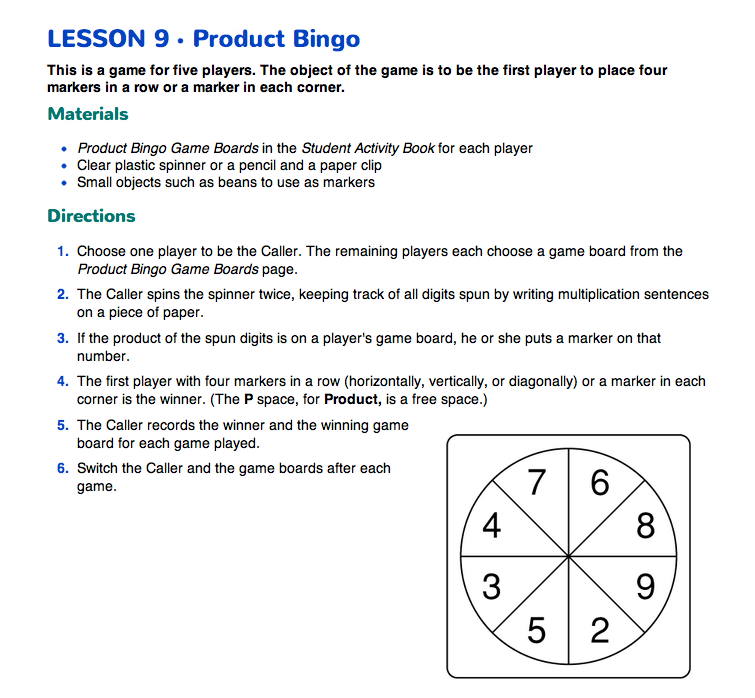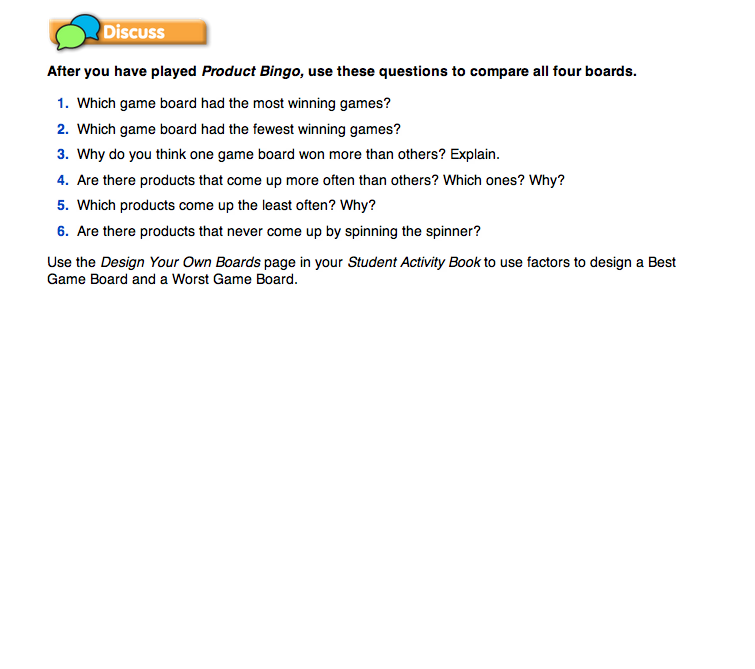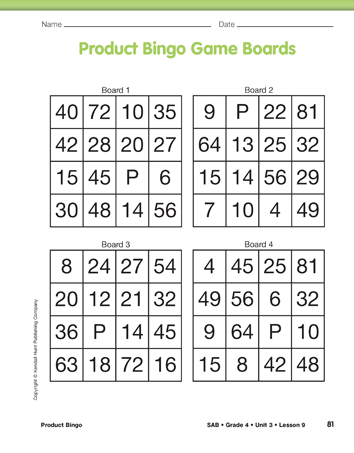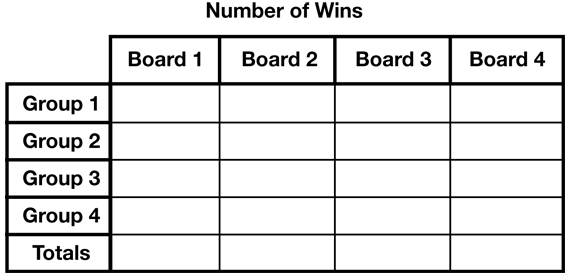Product Bingo
Est. Class Sessions: 2Developing the Lesson
Play Product Bingo. Begin by discussing the directions on the Product Bingo pages in the Student Guide. Demonstrate a few turns with the class to clarify how the game proceeds.
Ask students to play Product Bingo for 30 minutes. They may play several games in that time. Remind students to switch callers and game boards for each new game.
Ask the caller to record which Product Bingo game board won in each game.
Have each group discuss Questions 1–6 on the Product Bingo pages in the Student Guide.
Discuss Game Boards. Engage the whole class in a discussion of winning and losing game boards. See the Sample Dialog. Ask students to share the results of which boards won and display the class totals on the board. See Figure 1.
Encourage students to examine the factors of the numbers on each board. The board that is most likely to win is the board whose numbers have the greatest number of factors that are on the spinner. For example, Board 2 has the number 13 on it. 13 is prime. It has two factors, 1 and itself. The factors, 1 and 13, are not on the spinner, so the number 13 on Board 2 can never be filled in. However, a number like 12 on Board 3 can be filled in by spinning 2 and 6, or 3 and 4.
Students can make a list of the possible factors for each number on the boards (keeping the numbers on the spinner in mind) to help them find the board that is most likely to win. Assign one game board to each group. Then use the result to help students compare game boards.


















